Let’s face it: yields on Treasuries and “regular” stocks are still pathetic! We need much bigger payouts (I’m talking yields of 7%+ here) to fund our lifestyles in these inflation-weary times.
Trouble is, most of us have been conditioned by the media and Wall Street to believe that all yields that big are dangerous. Nothing could be further from the truth!
Case in point: my favorite high-yield vehicles, closed-end funds (CEFs), which hold all the assets most folks own, like blue chip stocks, corporate bonds and real estate investment trusts (REITs). Except when we buy these assets through CEFs, we get much higher yields than we would if we bought “direct.”
And talk about safety: some CEFs have been around for decades—and one we’ll talk about below is close to marking a century in business!
So let’s get on with it. Here’s a diversified 3-fund “mini-portfolio” of CEFs that yield north of 8% on average and have been around forever—delivering strong dividends and upside to the few lucky folks who know about them. Buy these three now and you’ve taken a big step toward boosting your income and growing your portfolio’s value, too.
“Vintage” CEF No. 1: A 93-Year-Old Fund That “Converts” Stock Gains Into Cash
The Adams Diversified Equity Fund (ADX) traces its roots to the Adams Express Company, a transport firm that pivoted to investing as a fund in 1929. ADX launched just before the October 1929 crash—and survived. In fact, it’s survived many crashes and is still around to this day.
ADX is the first of three funds I want to show you today. Thanks to its extremely long history, it has a small group of happy shareholders but is almost totally unknown elsewhere.
Market Profits With an Income Twist
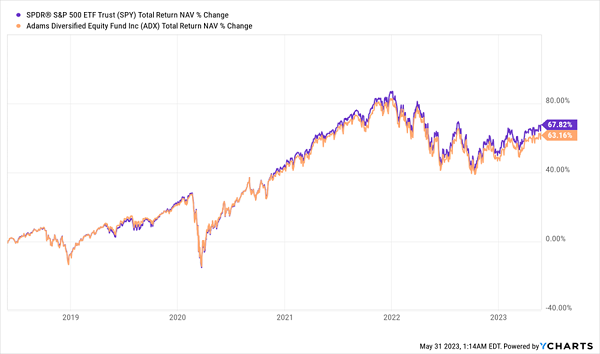
As you can see, ADX closely replicates the performance of the S&P 500, due to the variety of large-cap stocks in its portfolio, including Microsoft (MSFT), Visa (V) and lab-gear maker Thermo-Fisher Scientific (TMO). But here’s the real benefit of going with ADX over an index fund: thanks to its high yield (ADX yielded 6.7% in 2022, and I expect a higher yield this year), investors get most of their returns in cash, rather than unreliable “paper” gains:
ADX’s Big Payouts
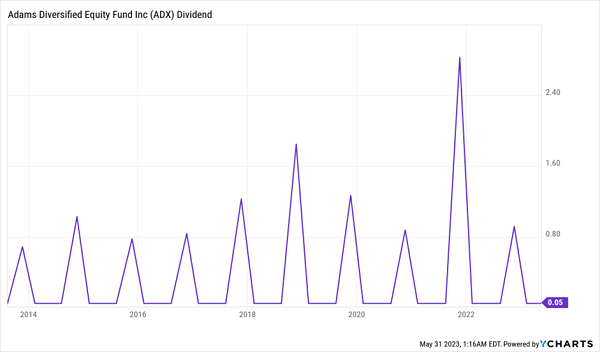
That’s because this fund is literally designed to convert its portfolio gains into dividends: it pays most of its dividend in the form of a big year-end special payout and aims to include most of its year-end gains in that payout.
Plenty of folks take a pass on ADX for that reason, preferring the monthly or quarterly payouts of other funds. That’s too bad for them, because they’ve missed a 9.8% annualized total return from ADX in the last 15 years—or 299% in total—again, with most of that gain in cash. The kicker here is that you’re also buying ADX at an attractive valuation, with the fund trading at a 16.5% discount to net asset value (NAV, or the value of its underlying portfolio).
“Vintage” CEF No.2: A 9.2%-Yielding Legend of the Bond World
With ADX covering off the stock side of things, let’s move on to a younger (52 years old, to be exact) bond CEF called the Barings Corporate Investors Fund (MCI). This one yields 9.2% and also boasts an impressive track record, clobbering the corporate bond benchmark SPDR Bloomberg High Yield Bond ETF (JNK) since the latter’s inception in 2007.
MCI Has Outrun Its Benchmark …
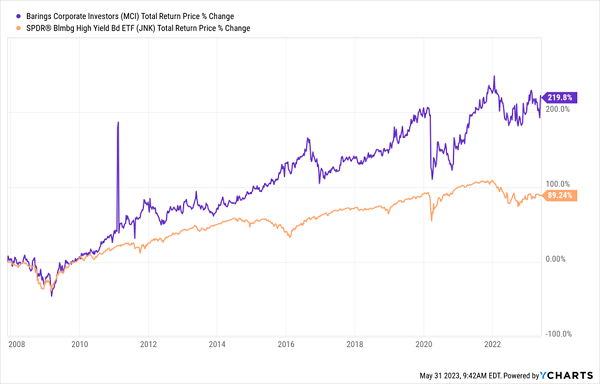
Now let’s talk about this fund’s discount to NAV, which clocks in at around 15% right now, so as with ADX, we’re getting an opportunity to buy at an attractive level—especially when you consider that MCI traded at a premium to NAV just over a year ago:
… But Is Still Ridiculously Oversold
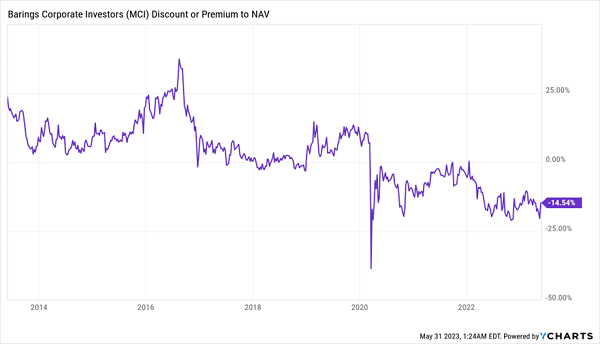
So when might that premium return? The reason the current discount exists is simply because a lot of investors are still rattled by the inflation and rising rates we’ve seen since the pandemic.
MCI’s Premium to Return
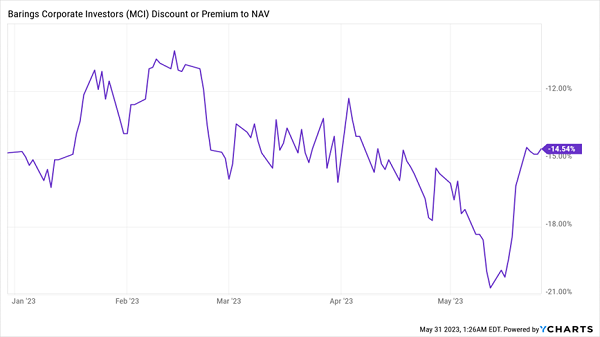
But inflation is falling, and rates look topped out here, which is why MCI’s discount is starting to shrink. Buy in now, before it shrinks completely, and you’ve got, along with ADX, a nicely valued portfolio of hundreds of assets spread out across a dozen industries—not to mention terrific dividend yields.
“Vintage” CEF No. 3: Big Dividends From a “Veteran” Real Estate Fund
Let’s round things off with real estate, and the youngest fund in the mix, the Cohen & Steers Total Return Realty Fund (RFI), which launched in 1993. That makes it just slightly younger than the first-ever ETF, which was launched in January 1993.
This also means RFI is older than any other ETF, and it has done a great job of matching the S&P 500’s performance—that is, until recently, when rising rates curbed the growth of the (REITs RFI invests in.
But again, I expect REITs to rebound as rates top out and start to move lower in the coming months, making now a good time to buy in.
RFI’s Solid History
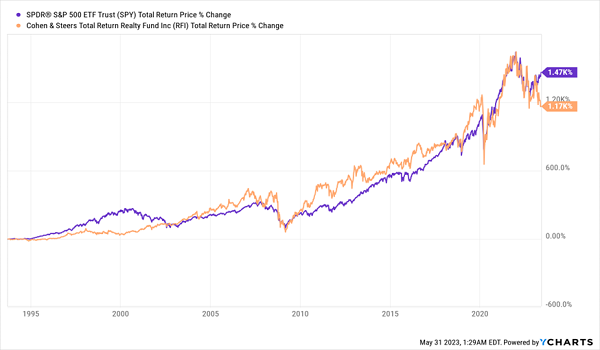
Much of this fund’s return is paid out in the form of its 8.7% dividend, which has held firm since RFI’s inception. Plus the fund has a history of paying big special dividends, too.
Cohen & Steers employs some of the best real estate analysts in the business, and RFI is one of their best funds, so this track record is not surprising. Nor is the fact that RFI used to trade at a 12% premium, which is well above the 1.7% discount it sports today.
This state of affairs can’t last, and when investors realize how underbought RFI is, I expect its discount to vanish and its market price to rise, giving buyers healthy profits to go with their 8.7% dividends.
5 “Hidden” (for Now!) Funds With Dividends Up to 11%, Poised for 20%+ Price Gains
At this point you may be wondering: “With dividends and gains like these, why isn’t everyone buying CEFs?”
Great question. The answer is that Wall Street and the media would much rather talk about flashy stocks in AI, electric cars, green energy or other “hot” investor trends. When they do talk funds, they almost always talk about overhyped ETFs, not CEFs.
But CEFs are climbing on to the public’s radar, making now a great time to buy. The 3 funds above are a terrific start. But I’ve got 5 other CEFs I urge you to check out now, too. They pay an outsized average dividend of 9% and they’re so cheap I’m calling for 20%+ price gains in the coming year.
Do not miss your chance to get in before the public catches a whiff of the deals—and dividends—on offer here.
